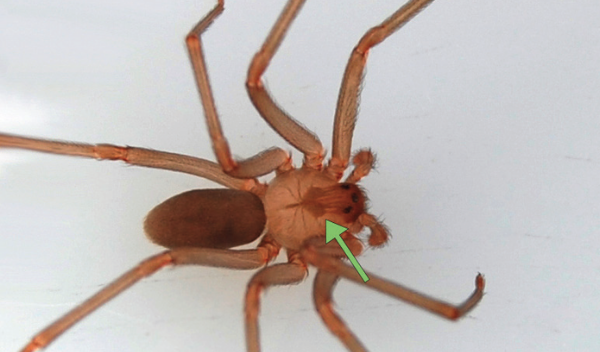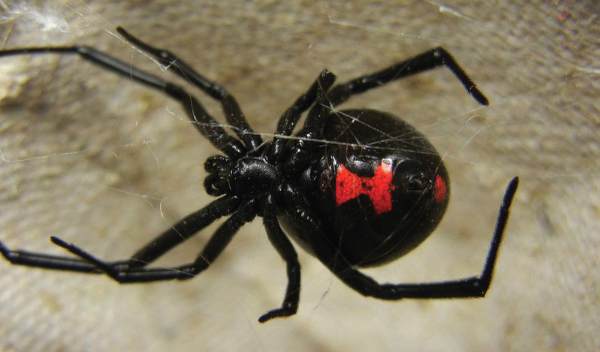Board Pearls That Will Give You The Heebie-Jeebies

BEWARE! Reading these creepy high-yield board pearls might cause you to feel something crawling up your arm, a little tickle on the back of your neck, and give you the heebie-jeebies.
Just like in the Internal Medicine and Pediatrics Core, we highlighted all of the high-yield board relevant facts in these pearls so you can see exactly what you need to for boards and practice.
High-Yield Pearls About Spiders 🕷
In the U.S., the spider whose bite can cause a necrotic reaction is the recluse spider (genus Loxosceles). The brown recluse (Loxosceles reclusa) is found in the southcentral U.S.; other recluse species are found along the southwestern border of the U.S.
Geographic distribution of poisonous spiders aka creepy crawlies
Brown Recluse Spider Pearls
 Brown recluse spider—note the violin pattern on the dorsal cephalothorax
Brown recluse spider—note the violin pattern on the dorsal cephalothorax
Brown recluse spiders tend to hide in wood piles, attics, closets, and seldom-worn clothing. Adults have a leg span of ~ 25 mm, 6 eyes, and have a dark violin pattern on the dorsal front portion of the body (cephalothorax); thus, they are also called “fiddleback” or “violin” spiders. Their venom contains sphingomyelinase and other substances that lyse cell walls, activate complement, and cause local necrosis.
The reaction to the bite of all the recluse spiders is similar. Initially, the bite is painless; pain develops at the site 2–8 hours later. Over the next 1–2 days, a hemorrhagic blister develops that eventually progresses to a necrotic ulceration. Patients rarely have systemic symptoms, such as fever, chills, nausea, or vomiting.
Cutaneous loxoscelism is the term given for the ulcerative effect of the recluse bite (genus Loxosceles). It is the only spider that affects humans this way.
Treatment is supportive with local wound care because these bites are seldom infected but can take a week to heal. (If there is obvious infection, think MRSA instead.) The lesions may continue to expand for as long as 10 days, but most eventually heal spontaneously without surgical or other intervention. Other treatments (e.g., dapsone, steroids) are controversial because data on effectiveness is lacking. Dapsone is commonly used to prevent the wound from necrosing. Glucose-6-phosphate dehydrogenase (G6PD) deficiency is a contraindication.
Black Widow Spider Pearls
 Black widow spider—note the red/orange hourglass on the ventral abdomen
Black widow spider—note the red/orange hourglass on the ventral abdomen
Black widow spiders are found throughout the U.S. (except Alaska); the southern black widow and western black widow spiders are most commonly responsible for serious symptoms. Widow spiders hide in dimly lit, warm, dry outhouses and sheds. They are large, with leg spans of up to 40 mm. Patients usually have a recent history of outdoor activity, such as cleaning out a garage. Female spiders are twice the size of males and cause the most severe bites; a mature black widow female has a red or orange hourglass marking on the ventral surface of the abdomen.
Black widow spider venom is a neurotoxin that causes very little local reaction, although cutaneous reactions can include erythema, edema, and piloerection. Initial signs and symptoms include pain at the site, diaphoresis, muscle cramping, chest tightness, vomiting, malaise, sweating, abdominal pain (can mimic appendicitis), agitation, and hypertension.
Treatment includes local wound care, analgesia, and tetanus prophylaxis. Usually, all symptoms resolve within 24–48 hours. More severe cases can be treated with widow antivenin. Be aware that widow antivenin, like snakebite antivenin, can cause anaphylaxis.
Wounds from the painless bite of the brown recluse can take a week or more to heal as a result of the enzymatic tissue breakdown, while the wound from the painful bite of a black widow releasing a neurotoxin heals more rapidly and with no tissue destruction.
Still reading? Wow, you're really embracing spooky season. Want even more practice and board relevant pearls on creepy crawlies like bed bugs, lice, and scabies? You'll find this information in the Internal Medicine Core under Dermatology > Skin Infections > Infestations and Bites. You'll find it in the Pediatrics Core under Emergency Medicine & Maltreatment Syndromes > Bites > Spider Bites.
Start reading for free to get chills! We triple dog dare you.



